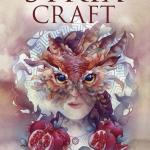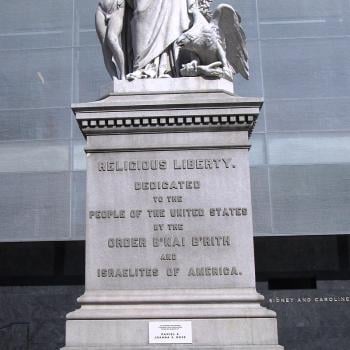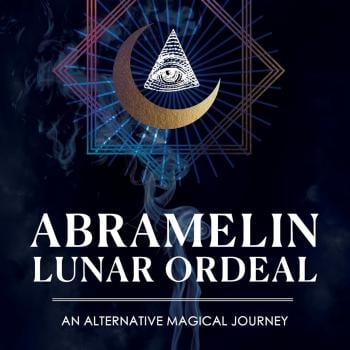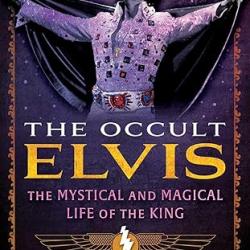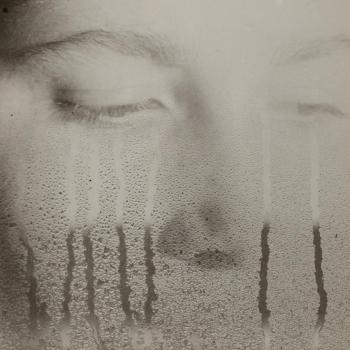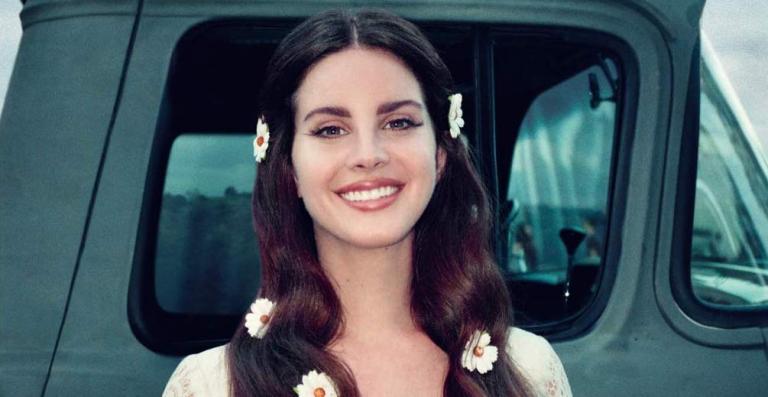 Are celebrity witches such as Taylor Swift and Lana Del Rey a good thing or a bad thing?
Are celebrity witches such as Taylor Swift and Lana Del Rey a good thing or a bad thing?
Over the years a number of celebrities have identified as witches, with apparently the latest being Taylor Swift. There is considerable negativity and sometimes amusement from the pagan / witch communities directed towards such celebrities that borders on condescension, as it’s assumed that these people lack the requisite training to make such claims. Accusations include that these celebrities are aligning themselves with something that is either trendy or controversial. What accusers fail to take into consideration is that these celebrities risk alienating themselves from their devout Christian fans, so whatever fans they may gain will probably be more than offset by the number that they lose.
I personally think that celebrities identifying as witches is a good thing.
People fear that which they don’t understand, and historically witches have been persecuted. To have celebrities coming out as witches brings witchcraft out of the shadows and into the mainstream. While staunch Christians may never accept witchcraft as a legitimate spiritual path, ordinary people may well do so after seeing that celebrities they look up to have embraced it. Also, a new generation of children and teenagers may well decide to broaden their horizons – after all, the torch needs to be passed to someone.
Number of Celebrity Witches
Elle’s article “12 Celebrities Who Are Honestly Low-Key Witches”, Pop Crush’s article “25 Celebrities Who Practice Witchcraft or the Occult”, and VH1 News’ column in 2016 “The Week in Celebrity Sorcery” place the bar for identification as a witch quite low. Some celebrities self-identify as witches, pagans, brujera or Santeria practitioners and this is accepted at face value. Any who use crystals or smudge, or have seen a ghost, are automatically classified as witches.
So, how many celebrity witches are out there? It’s difficult to tell, given that the numbers in popular articles are exaggerated. Given the possibility of discrimination and ostracism by Christian fans, I imagine that there could well be a few genuine ones flying under the radar apart from the ones who’ve come out of their broom closets.
Taylor Swift
Taylor Swift needs no introduction to anyone with at least a passing interest in contemporary music. She is no stranger to controversy.
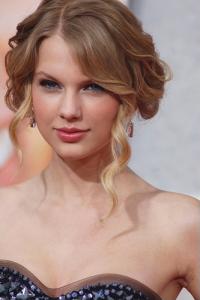
Pictured at the premiere of Hannah Montana: The Movie, Swift had a cameo appearance in the film and recorded two songs for its soundtrack
On May 29, 2020, Voxx uploaded “Taylor Swift used to be apolitical. Now she’s slamming Trump on Twitter.” In response to the Minneapolis protests over the police killing of George Floyd, Swift denounced President Trump, taking full advantage of the fact that she has “6 million more Twitter followers than Trump has (86.1 million to his 80.5)” to tweet:
“We will vote you out in November,” Swift warned Trump, saying that he had “stok[ed] the fires of white supremacy and racism [his] entire presidency.”
On December 17, 2020, The Mary Sue breathlessly announced that Taylor Swift was a witch in its article, “Is Taylor Swift a Witch Now?”
“I’m pretty sure Taylor Swift is a witch now and I want to be the first to welcome her to the coven.
We got the first hints that Taylor was down with the goddess when folklore hit this summer. For one, folklore (the thing and not the album), is the literal gateway to magic, witchcraft, and the occult. We learn about spells and ghosts and the fae and all sorts of mystical things through actual folklore. Plus, the album was fall distilled into music and we all know fall is the witchiest season. And literally every witch I know was obsessed with it.
But now Taylor has made her witchy nature explicit with evermore and the accompanying videos, remixes, and tweets. Specifically, the opening song ‘willow’ and the accompanying music video. In the video, Taylor follows a magic thread to find her love, and at one point ventures into a snowy forest to dance around a magic fire under the full moon with a bunch of people in capes and masks that look a lot like witches!”
The assertion has been picked up by a number of other sites, as a Google search will show.
So here we have an incredibly popular singer who appears to practice witchcraft and is encouraging her many fans to do likewise.
Lana Del Rey
Lana Del Rey is another singer needing no introduction.
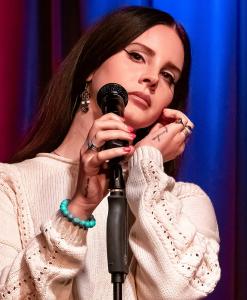
Lana Del Rey performing live at the Grammy Museum in Los Angeles on 10/13/2019
On February 24, 2017, Elle uploaded “Lana Del Rey Will Cast A Spell On Donald Trump At Midnight” which stated that Lana Del Rey was encouraging her fans to join her in a binding spell cast on President Trump by thousands of witches around the world:
“At midnight, witches around the world will cast a binding spell on President Donald Trump. Unsurprisingly, the witchy Lana Del Rey confirmed she’s getting her witch on, too―and invites you to do the same.
Until Trump is removed from office, the spell will be re-cast every night of a waning crescent moon (so, as Del Rey tweeted, Feb. 24, Mar. 26, Apr. 24, May 23, etc.)”
For more details on the binding, see Michael M. Hughes’s “Magic for the Resistance: Rituals and Spells for Change.”
On July 21, 2017, NME uploaded “Lana Del Rey: Read NME’s exclusive interview with the modern icon” where she confirmed that she did participate in the binding spell on President Donald Trump and that she does engage in spellcasting:
“We end by talking about magic and the power of words. Firstly, Donald Trump. He’s still the president, which means that the hex Del Rey asked her Twitter followers to cast on February 24 hasn’t worked (yet). So did she get involved and do it herself?
‘Yeah, I did it. Why not? Look, I do a lot of s**t.’
Do you cast other spells at home?
‘I’m in line with Yoko and John and the belief that there’s a power to the vibration of a thought. Your thoughts are very powerful things and they become words, and words become actions, and actions lead to physical changes.’”
So here we have another incredibly popular singer who appears to practice witchcraft and is encouraging her many fans to do likewise.
Persecution of witches in the past
On October 20, 2020, History.com uploaded an updated version of “History of Witches”:
“Witches were perceived as evil beings by early Christians in Europe …
Early witches were people who practiced witchcraft, using magic spells and calling upon spirits for help or to bring about change. Most witches were thought to be pagans doing the Devil’s work. Many, however, were simply natural healers or so-called ‘wise women’ whose choice of profession was misunderstood. …
Witch hysteria really took hold in Europe during the mid-1400s, when many accused witches confessed, often under torture, to a variety of wicked behaviors. Within a century, witch hunts were common and most of the accused were executed by burning at the stake or hanging. Single women, widows and other women on the margins of society were especially targeted.
Between the years 1500 and 1660, up to 80,000 suspected witches were put to death in Europe. Around 80 percent of them were women thought to be in cahoots with the Devil and filled with lust. Germany had the highest witchcraft execution rate, while Ireland had the lowest. …
As witch hysteria decreased in Europe, it grew in the New World, which was reeling from wars between the French and British, a smallpox epidemic and the ongoing fear of attacks from neighboring native American tribes. The tense atmosphere was ripe for finding scapegoats. Probably the best-known witch trials took place in Salem, Massachusetts in 1692. …
Massachusetts wasn’t the first of the 13 colonies to obsess about witches, though. In Windsor, Connecticut in 1647, Alse Young was the first person in America executed for witchcraft. Before Connecticut’s final witch trial took place in 1697, forty-six people were accused of witchcraft in that state and 11 were put to death for the crime.
In Virginia, people were less frantic about witches. In fact, in Lower Norfolk County in 1655, a law was passed making it a crime to falsely accuse someone of witchcraft. Still, witchcraft was a concern. About two-dozen witch trials (mostly of women) took place in Virginia between 1626 and 1730. None of the accused were executed.”
Satanic panic and QAnon
On October 30, 2016, Vox uploaded a very informative article titled: “The history of Satanic Panic in the US — and why it’s not over yet”:
“At its core, satanic ritual abuse claims relied on overzealous law enforcement, unsubstantiated statements from children, and above all, coercive and suggestive interrogation by therapists and prosecutors. Some of the defendants are still serving life sentences for crimes they probably didn’t commit—and most likely didn’t even happen in the first place.”
Christian fundamentalism with its literal belief in angels and devils provides a fertile ground for another Satanic Panic despite it having been thoroughly debunked.
On October 19, 2020, The New York Times uploaded “What Is QAnon, the Viral Pro-Trump Conspiracy Theory?”. In some ways, QAnon can be seen as an extension of Satanic Panic:
“QAnon is the umbrella term for a sprawling set of internet conspiracy theories that allege, falsely, that the world is run by a cabal of Satan-worshiping pedophiles who are plotting against Mr. Trump while operating a global child sex-trafficking ring.
QAnon followers believe that this clique includes top Democrats including Hillary Clinton, Barack Obama and George Soros, as well as a number of entertainers and Hollywood celebrities like Oprah Winfrey, Tom Hanks, Ellen DeGeneres and religious figures including Pope Francis and the Dalai Lama. Many of them also believe that, in addition to molesting children, members of this group kill and eat their victims in order to extract a life-extending chemical from their blood.”
It is obvious that those perceived to be Satanists have been thought of as evil and a danger to children. Even though the Satanic Panic has been thoroughly discredited, the rise of QAnon shows how quickly people lacking critical thinking skills are to embrace a similar conspiracy theory accusing Hollywood and Liberal elites of Satanism and pedophilia, despite having nothing credible to substantiate it.
Current persecution of witches?
Many who fear and abhor Satanism do not distinguish between it and Paganism, Neopaganism, Witchcraft and Wicca. Over the last three decades, I remember numerous proclamations from pagans, neopagans, witches and wiccans that they do not believe in Satan or the Devil and that he has no place in their pantheons.
Addressing this issue, on August 23, 2013, Live Science uploaded “What’s Witchcraft? 6 Misconceptions About Wiccans”:
“Although it’s based on ancient beliefs, including aspects of paganism and nature-based spirituality, Wicca was founded by anthropologist Gerald Gardner in the early 1950s, according to ‘Magico-Religious Groups and Ritualistic Activities’ (CRC Press, 2008).
‘Wicca is a new religion that combines surviving folk traditions and more modern elements. It is loosely based on Western European pagan rites and rituals that have been performed for centuries — before, during and after the time of Jesus — such as reverence of nature, observance of the cycle of the seasons, celebration of the harvest, and doing magic,’ according to ‘Wicca for Beginners’ (Llewellyn Worldwide, 2006). …
Often confused with Satanists, followers of Wicca do not believe in the devil. The concepts of the devil and hell are part of Christian theology and have never existed in the Wiccan religion, according to “Wiccan Beliefs and Practices” (Llewellyn Worldwide, 2001).”
In the Wikipedia article, “Religious discrimination against Neopagans”:
“According to Starhawk, ‘religious discrimination against Pagans and Wiccans and indigenous religions is omnipresent in the U.S.’ Evidence exists that workplace discrimination is common from verbal ridicule to more systematic forms such as exclusion from work-related activities.”
It is not unreasonable to assume that the current discrimination against Pagans, Neopagans, Witches and Wiccans could escalate as more people embrace fringe beliefs such as QAnon.
I won’t be considering Hollywood’s impact on the perception of Witches as it has varied from presenting them as either evil, or benevolent or vacillating in between.
Millennials embracing witchcraft
On November 18, 2018, Newsweek uploaded “Number Of Witches Rises Dramatically Across U.S. As Millennials Reject Christianity”:
“Witchcraft and pagan religious practices increased in the U.S. over the past few decades, with Millennials turning to alternatives ranging from astrology and tarot cards and away from Christianity and traditionally dominant Abrahamic religions.
The number of witches and Americans practicing Wicca religious rituals increased dramatically since the 1990s, with several recent studies indicating there may be at least 1.5 million witches across the country. A Trinity College study conducted in 1990 estimated only about 8,000 Wiccans in the U.S., but the increase has been led by a rejection of mainstream Christianity among young Americans as well as a rise in occultism.
With 1.5 million potential practicing witches across the U.S., witchcraft has more followers than the 1.4 million mainline members of the Presbyterian church.”
Christianity is losing its relevance for many millennials as they do not share the conservative values of previous generations.
The role of celebrity witches
Given the possibility that the current discrimination against Pagans, Neopagans, Witches and Wiccans could escalate, it is very important to have celebrity witches such as Taylor Swift and Lana Del Rey demonstrating to their huge numbers of fans just how beneficial witchcraft can be, and encouraging them to embrace it. They will have a far greater impact on the future of Paganism, Neopaganism, Witchcraft and Wicca than any of the well-trained elders in these traditions.
Tony Mierzwicki
Author of Hellenismos: Practicing Greek Polytheism Today and Graeco-Egyptian Magick: Everyday Empowerment.

